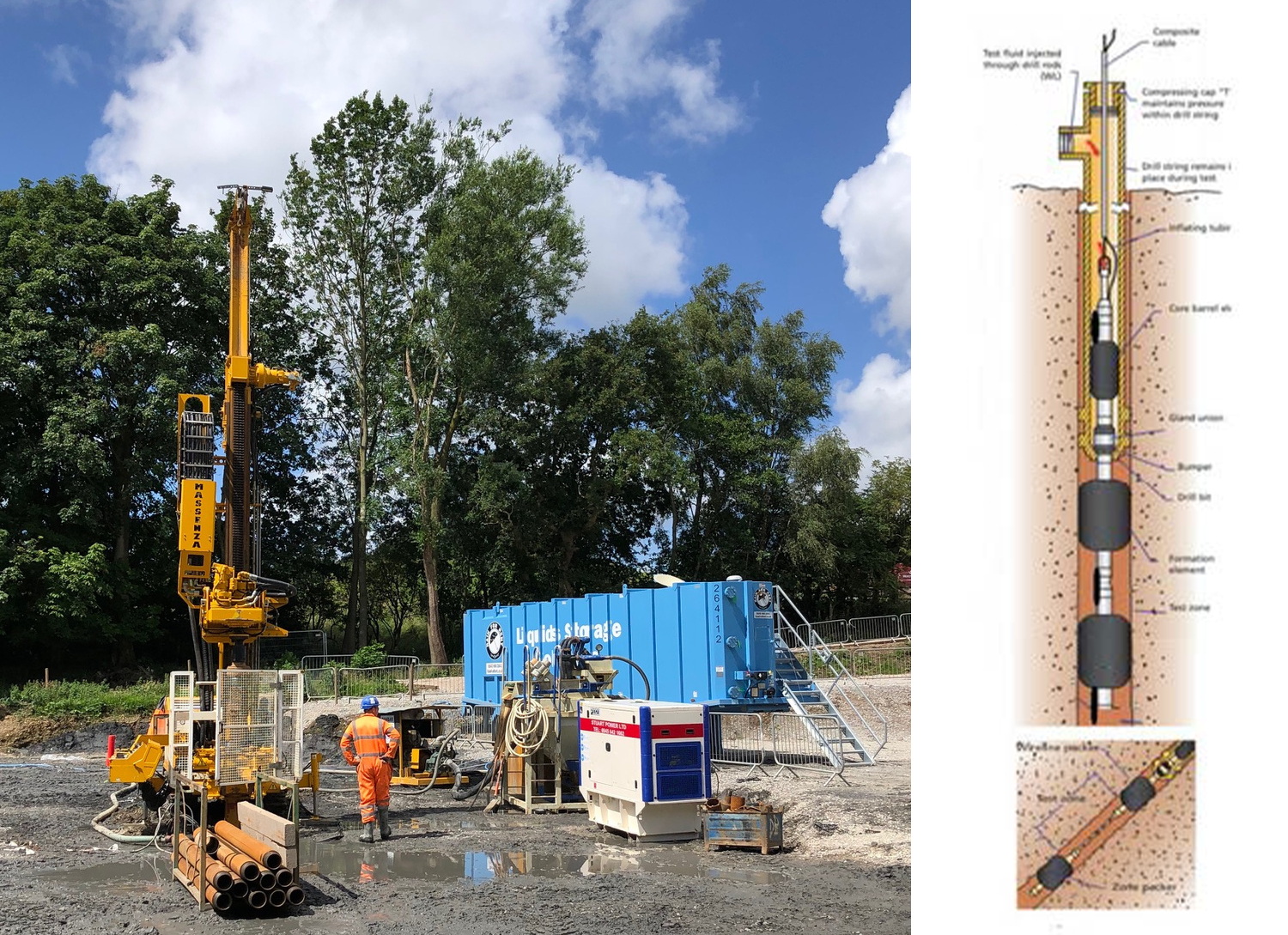Packer and pumping testing - Harrisons Farm
- Client: C2V Harrisons Farm
- Location: Adlington, Lancashire
- Duration: June to July 2020
Packer permeability testing to BS EN ISO 22282:2012, Geotechnical Investigation and Testing
Stuart Wells conducted detailed packer testing, including 5-step pressure increments while monitoring water pressure and flow. The subsequent analysis to determine lugeon and permeability values provided valuable insights into the site’s aquifer characteristics.
The installation of monitoring wells and the pumping test underscores the depth of the investigation, ensuring a robust understanding of the ground conditions. The final report, combining both factual and interpretive elements, was crucial for the client to make informed decisions on the construction of the detention tank.
Objective
The client required a comprehensive ground investigation to assess the site’s hydrogeological properties and groundwater conditions prior to construction.
Solution
As part of the ground investigation works Stuart Wells drilled and installed an abstraction well and five monitoring wells. A series of packer tests and a pumping test could then be undertaken in accordance with British Standards. (Packer tests to BS EN ISO 22282-3:2012 and a pumping test to BS ISO 14686:2003)
Scope of works
As part of the works the drilling contractor drilled two testing wells in 146mm Geobore S casing with no-core recovery, to depths defined by the client.
After drilling, the Geobore S was re-installed to depth with a wireline Geopro ‘double’ packer testing system utilised for testing. Inert Nitrogen gas was utilised for packer inflation. Testing was undertaken using 3 packers lowered on the drilling rigs winch. One was inflated within the Geobore S to maintain the integrity of the testing, with the two others inflated below the casing with the testing zone between them. With this method the Geobore S is utilised as the riser and pressurised as such.
Each individual packer test comprised of ‘5 steps’, 25, 50, 75, 50 and 25% of rock mass pressure, these steps were undertaken for 15 minutes each. This was repeated in each of the testing zones in testing boreholes. Testing was undertaken from the bottom to the top of the borehole. The maximum injected water rate was 4.0 l/s. This testing was undertaken in both boreholes and 13 no. tests were undertaken in total. Stuart Wells was able to monitor water pressure at 3 zones within the packer testing equipment using 3 pressure transducers and 1 barometric datalogger. Water flow was measured using an electric and propellor flowmeter and pressure was measured using a bouyon gauge and an electric pressure gauge with in-built datalogger. Stuart Wells conducted interpretative analysis of the results to determine the lugeon and permeability values for the client as part of this process.
Subsequently, packer tested boreholes were installed as groundwater monitoring wells and Stuart Wells drilled an additional pumping well, in order to conduct a pumping test in accordance with BS ISO 14686:2003. However, due to Environment Agency discharge consent limitations, discharged groundwater was limited to 100m3 a day and thus reduced the constant pumping rate. This resulted in Stuart Wells conducting a conventional test which comprised of an equipment test, step-test, constant rate test at 1.1l/s and recovery test, then subsequently abstracting 100m3 at the pumps maximum pumping rate to determine effects of pumping at high flows. A full factual report was produced and submitted to the client.

Downloadable PDF
Packer and pumping testing - Harrisons Farm
Related Case Studies
- Pumping Testing - HS2 Ventilation Shaft
- Pumping Testing - Lower Thames Crossing
- Pumping Testing - Haweswater Aqueduct
- Permeability Test - Lower Thames Crossing
- Permeability Test - HS2 Greatworth
- Packer Testing - EKFB JV Wendover
- Geophysical Testing - Hinkley Point C
- Geophysical Testing - HS2 Wendover Green Tunnel
- Geophysical Testing - Montrose Distillery

